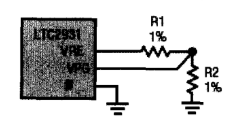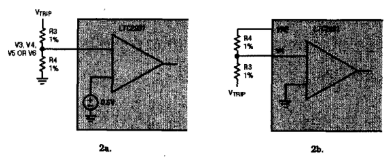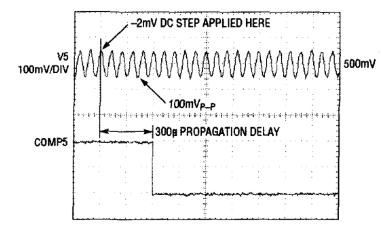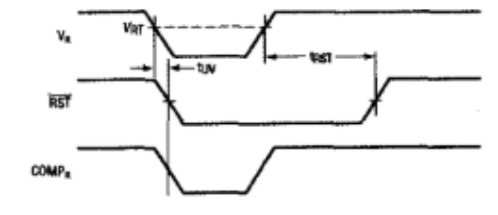What are the performance characteristics and functions of the six-input voltage monitor?
Introduction
Linear Technology ’s latest set of power monitors (including three devices) are 6-input voltage monitors, which provide an ideal choice for today ’s multi-voltage systems that require accurate power monitoring. The LTC2930, LTC2931, and LTC2932 can maintain a threshold accuracy of 1.5% over a temperature range of 40 ° C to 125 ° C. The combination of the monitored power supply voltage is set by a single pin. Each device provides 16 combinations of threshold voltages to meet the requirements of almost all multi-voltage systems. Its programmability eliminates the need to authenticate, purchase, and stock unique devices for different threshold voltage combinations.
The overall architecture and operating specifications of these three devices are very similar, but each has some unique characteristics (see Table 1). The LTC2930 will generate a reset signal after any undervoltage process or when the manual reset input (/ MR) is pulled low. Due to its compact 3mm x 3mm 12-pin DFN package, it is suitable for space-constrained applications. The LTC2931 includes a watchdog input (WDI), a watchdog output (/ WDO), and a watchdog cycle that can be adjusted by the user. It is designed to implement microprocessor monitoring and control. The LTC2932 can change its monitor threshold (from 5% to 12.5%), and a reset disable pin provides margin adjustment capability. Both the LTC2931 and LTC2932 are packaged in a 20-pin TSSOP and have separate comparator outputs, enabling separate power supply monitoring and / or sequencing.

Single-pin configuration simplifies design
These monitors provide a good way to configure the input voltage threshold. Figure 1 shows how to use a single resistive voltage divider on the VPG pin to set the monitor to one of 16 threshold options.
The actual threshold is set by the integrated precision voltage divider, which is used for 5V, 3.3V, 3V, 2.5V, 1.8V and 1.5V power supply monitoring. For other power supply voltage values, an independent comparator with a 0.5V threshold allows the use of a resistive voltage divider to monitor almost any positive power supply, as shown in Figure 2a. The V4 input also uses an integrated buffer reference for offset to monitor the negative voltage and provides the same 1.5% accuracy, see Figure 2b.

What is the meaning of threshold accuracy?
Assuming a 5V system with ± 5% power supply tolerance, the 5V power supply can vary from 4.75V to 5.25V. System ICs powered by this power supply must operate reliably within this voltage range (and voltage conditions slightly outside this range, as explained below). If a monitor for this power supply has perfect accuracy, then it will accurately generate a reset signal at 4.75V. However, such an ideal monitor does not exist. The actual reset threshold of the monitor will fluctuate within a specified range; the reset threshold of the LTC2930, LTC2931, and LTC2932 will vary within ± 1.5% of their nominal threshold voltage over the entire temperature range (Figure 3). The reset threshold range and power supply tolerance range should not overlap. This prevents erroneous or troublesome resets when the power supply is actually within its specified tolerance range.
The LTC2930, LTC2931, and LTC2932 have a reset threshold accuracy of ± 1.5%, so a “5%” threshold is usually set at 6.5% lower than the nominal input voltage. Therefore, for a power supply with a typical value of 5V, the "5%" threshold is 4.675V. The threshold is guaranteed to be within the voltage range of 4.750V to 4.600V over the entire temperature range. The power receiving system must be able to operate reliably under voltage conditions as low as the lower limit of the threshold range, otherwise there is always the danger of malfunction before a reset signal is correctly issued.
A less accurate monitor will increase the required system voltage margin and lead to an increased probability of system failure. The strict (± 1.5%) accuracy specifications of the LTC2930, LTC2931, and LTC2932 improve the reliability of the system compared to monitors with looser threshold specifications.
Interference immunity = no false reset
The monitored power supply voltage is far from ideal and perfectly flat DC signal. "Riding" above these power supply voltage signals are those high-frequency components caused by many signal sources (for example, the output ripple of the power supply or coupling from other signals). If the monitored voltage is close to or at the reset threshold voltage, the noise may cause a false reset. LTC2930, LTC2931 and LTC2932 have fully considered this potential problem during design, so there is almost no need to worry about the occurrence of false reset at all.
Some power monitors overcome the false reset problem by adding hysteresis to the input comparator. The magnitude of the applied hysteresis is expressed as a percentage of the transition threshold. But this will result in a decrease in the accuracy of the monitor, because the true accuracy of the trip threshold is now the percentage of the sum of the additional hysteresis and the declared accuracy of the device. The LTC2930, LTC2931, and LTC2932 do not use hysteresis, but instead use an integrated solution that requires transients to have sufficient magnitude and duration before switching the comparator. This can suppress the occurrence of false reset without causing deterioration of the accuracy of the monitor.
Figure 4 shows the COMP5 comparator output response to a "noise" input on the LTC2931. In this example, a 500kHz, 100mVP-P sine wave centered at 500mV is added to the V5 input. Even if the signal amplitude goes down to 450mV, COMP5 will remain high. Next, the input DC level drops by 2mV. In response, COMP5 will be pulled low and held low. As mentioned earlier, only transients of sufficient duration and magnitude will trigger the comparator output to be pulled high or low.


LTC2950-1 is used to provide button control of the sequencer. After the button is pressed, the LTC2950-1 pulls the RUN pin of the LTM4600 high. Next, the LTM4600 will produce a 5V output, all 4 DC / DC converters are powered by this output.
If you want to know more, our website has product specifications for monitor, you can go to ALLICDATA ELECTRONICS LIMITED to get more information

